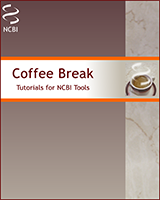From: Viruses provide direction on the plant information superhighway

NCBI Bookshelf. A service of the National Library of Medicine, National Institutes of Health.

(A) This image of a transverse section of winter squash depicts the various components of the phloem. Black dots outline companion cells (CC) and sieve elements (SE) joined by fine, branched plasmodesmata. Black asterisks identify immature sieve elements; the white asterisk reflects the identical cell in images (A) and (B).
(B) CmPP16 mRNA (green fluorescent signal) is shown to have moved within the phloem. mRNA was found mostly in companion cells, but also in mature, functional sieve elements suggesting its movement through plasmodesmata.
(Reproduced with permission from: Xoconostle-Cazares, B., Xiang, Y., Ruiz-Medrano, R., Wang, H.-L., Monzer, J., Yoo, B.-C., McFarland, K.C., Franceschi, V.R. and Lucas, W.J. (1999) Plant paralog to viral movement protein that potentiates transport of mRNA into the phloem. Science 283, 94-98.)
From: Viruses provide direction on the plant information superhighway

NCBI Bookshelf. A service of the National Library of Medicine, National Institutes of Health.